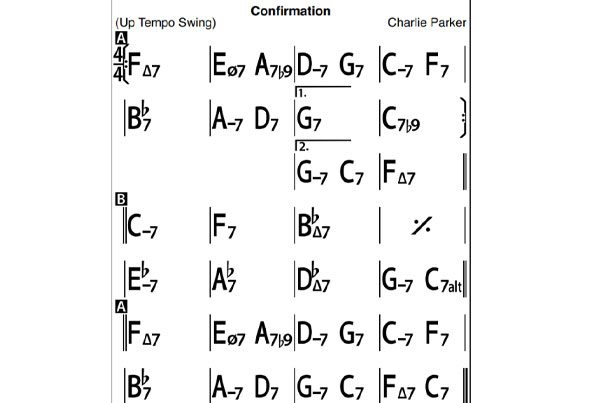
Recently, one of my staff members presented an analysis of the chordal harmony of Charlie Parker’s “Confirmation.” His approach to the second chord (an Em7b5 in the key of F) was to call it a diminished chord which isn’t entirely incorrect, aside from that it would be more accurately labelled a half diminished, or, per above, a minor 7 b5. (I should note that for readers not familiar with these chord terms, please hang in, there’s a larger point to be made.) So, I corrected him, advising a “better” way, also responding to some of the other chords he had labelled a bit strangely to my ears.
Here’s the wider point – is there a better way? A correct way? Is there one way to understand chord movement? Of course, this question assumes that we are keen on learning underlying chordal structure. There are many without this inclination who arose to be among the most profoundly influential of musicians – think Bob Marley, John Lennon.
There are also those who approach harmony in terms of its emotional impact and aesthetic effect. This kind of analysis and approach is excellent and recommended (check out Adam Maness and others from the superb learning forum Open Studio), but only one aspect in the recognition of the system that lies behind it all. I vote that understanding harmony is a shortcut to a broader musical language, and if this understanding and its application is kept transparent, is essential learning for pro level musicians.
Back to my staff member’s approach (and another warning to those not up to date on the technical lingo, again please hang in) – in my view which is reflective of the foundational principals of Western Harmony Simplified, the second chord of Confirmation needs to be seen as the first chord of a II V I sequence – Em7b5 to A7 to D minor (D minor which is the VI chord in our home key of F major temporarily becoming the target chord in the sequence). Here, instead of seeing three individual chords, we are simplifying, and seeing one group of chords – the II V I pattern – instead of the brain needing to navigate through the three. This of course, requires fluency with the patterns – yes, some time and effort is required.
And back to the questions – is there a right way, a better way, an objective way – I would again say, yes. The classical and jazz/popular music traditions have arrived at pretty much the same conclusions outlined in a “diatonic” system. What I add to the better way approach, is finding the core level simplicity in the system, one that sheds non-essential layers, or at least doesn’t muddy up the waters with theory that stays in its own realm, and doesn’t make its way onto the player’s or composer’s brush.
Start Reading Now
Get 3 Free Chapters

Start Reading Now
Buy the Book




